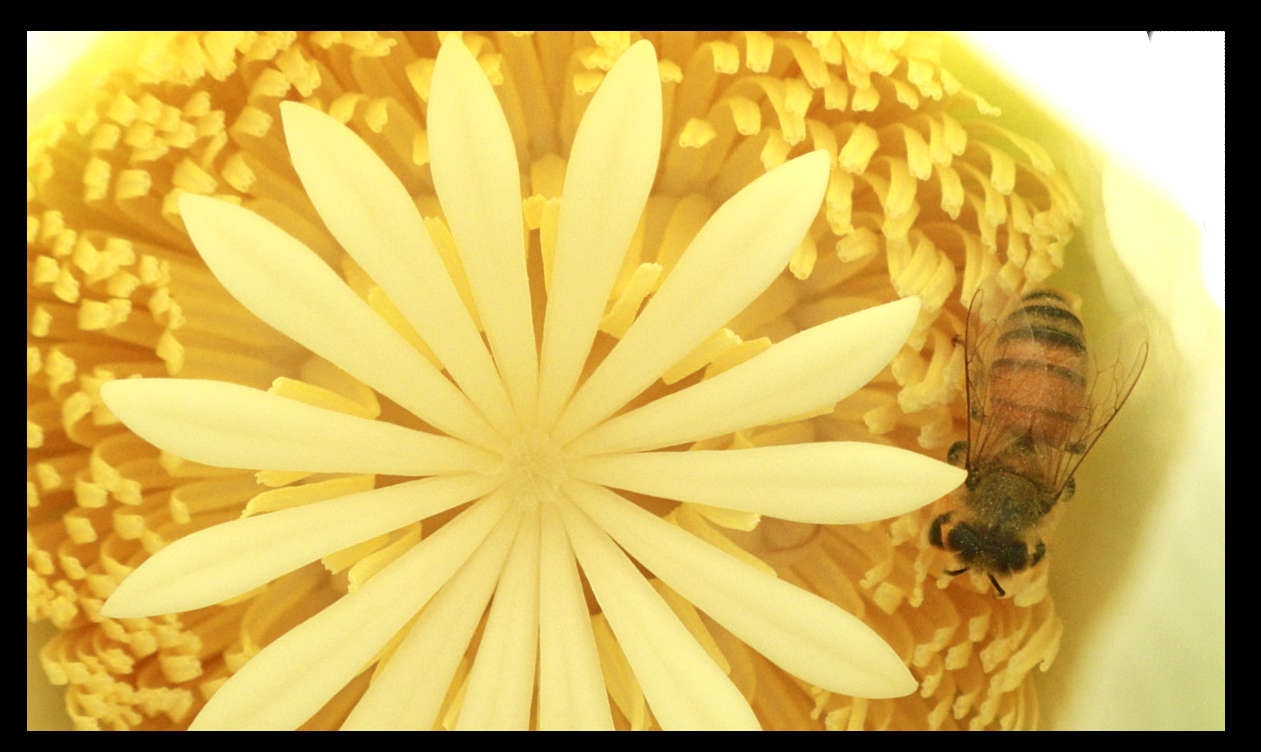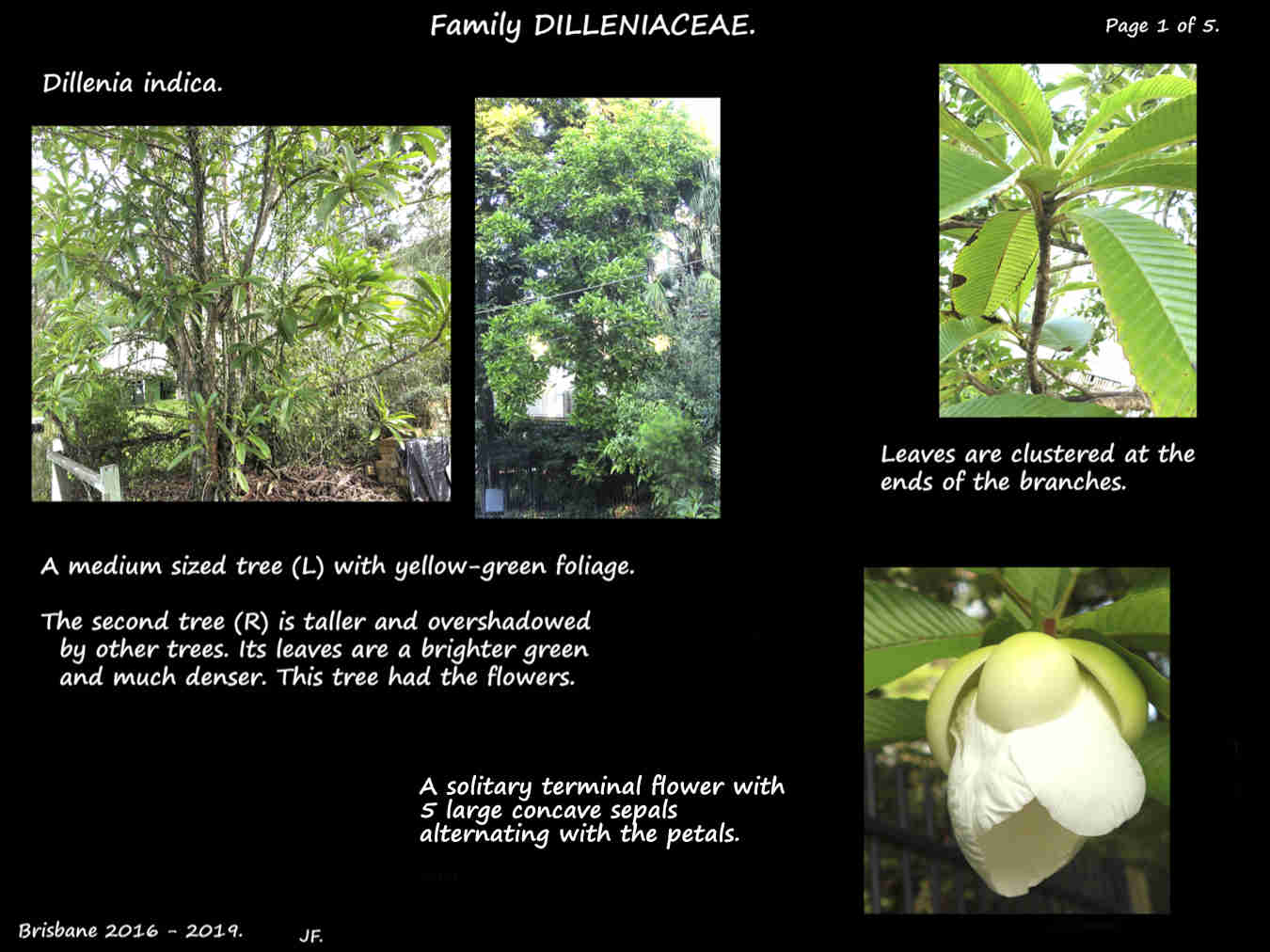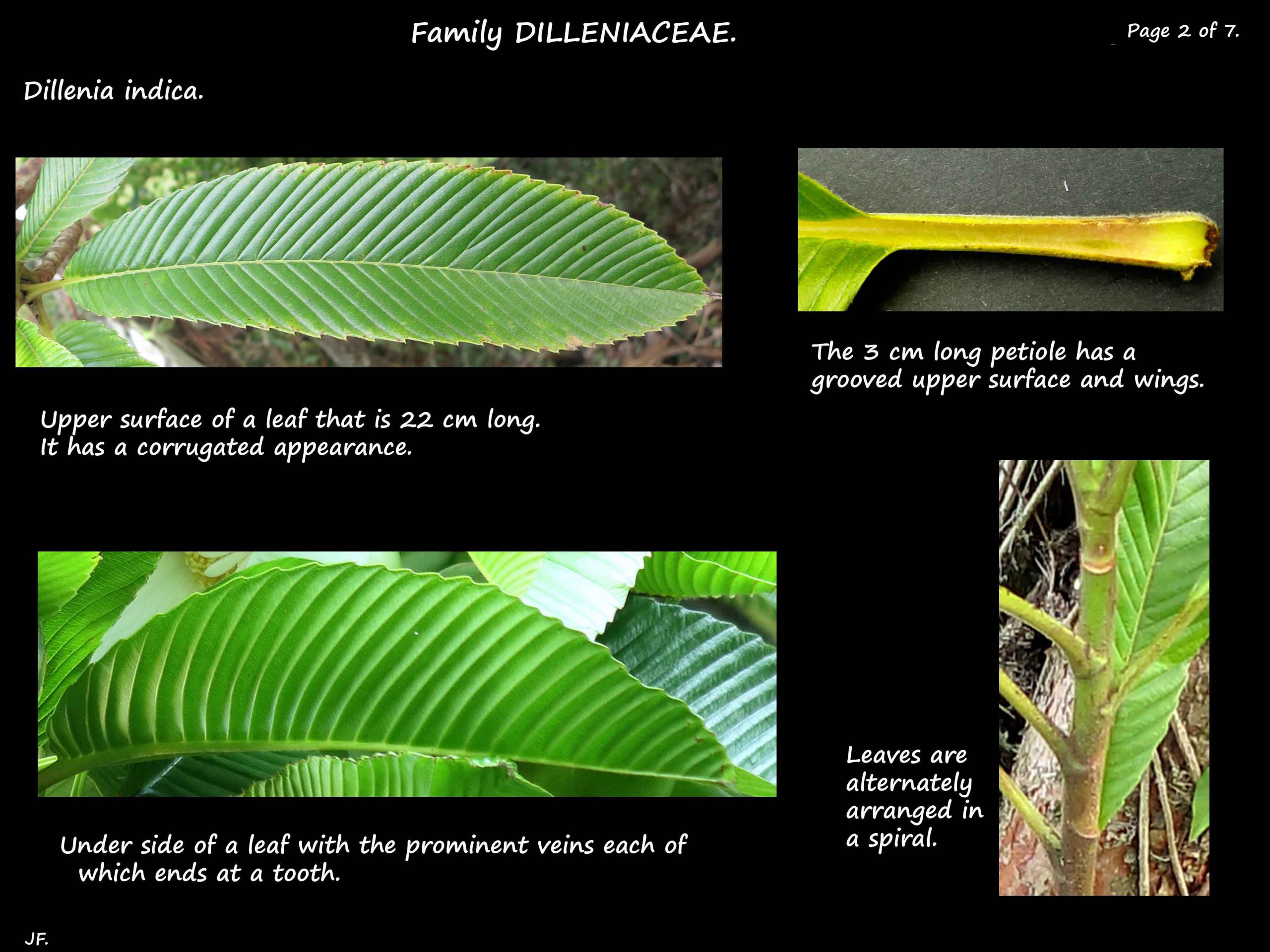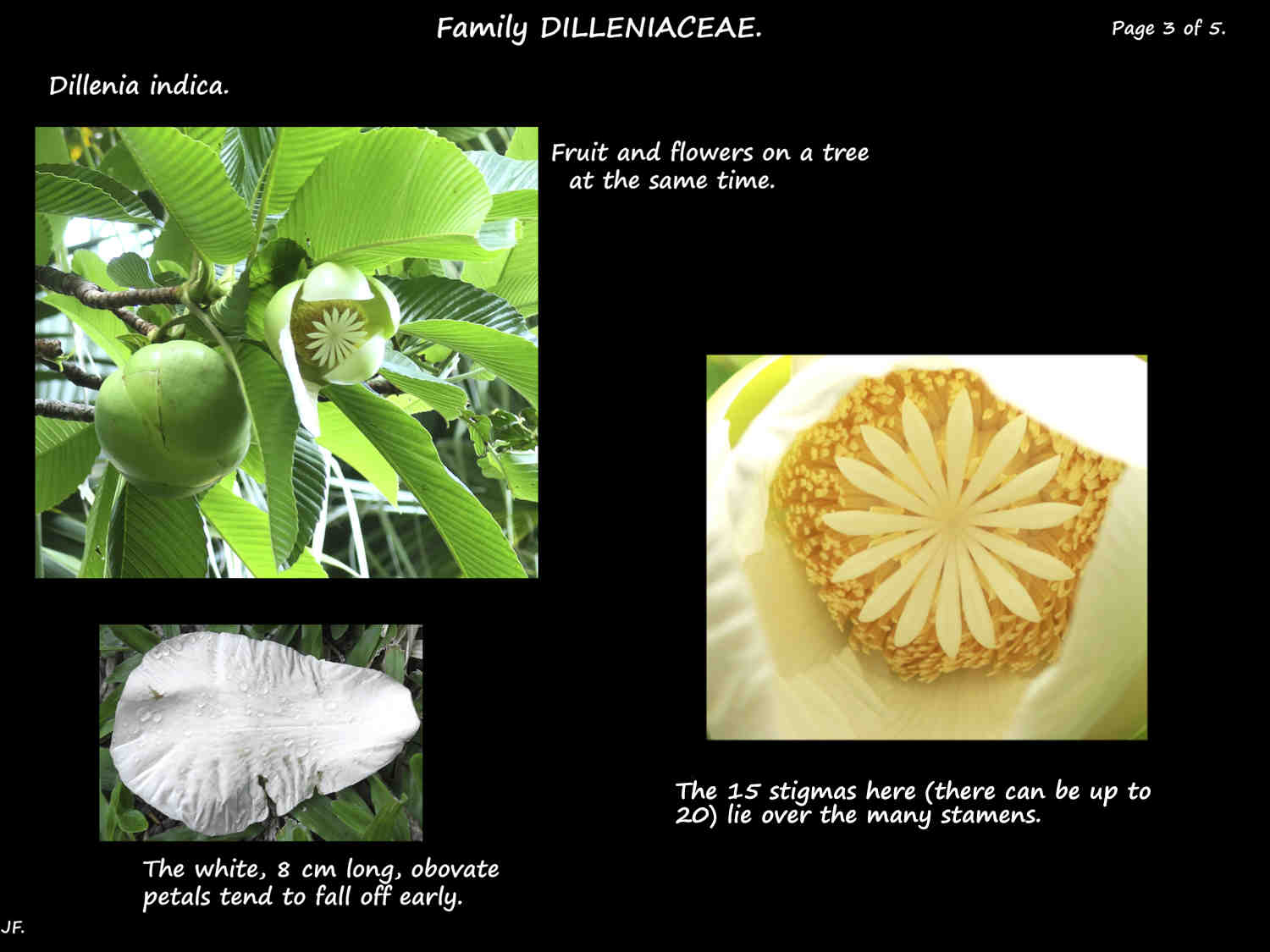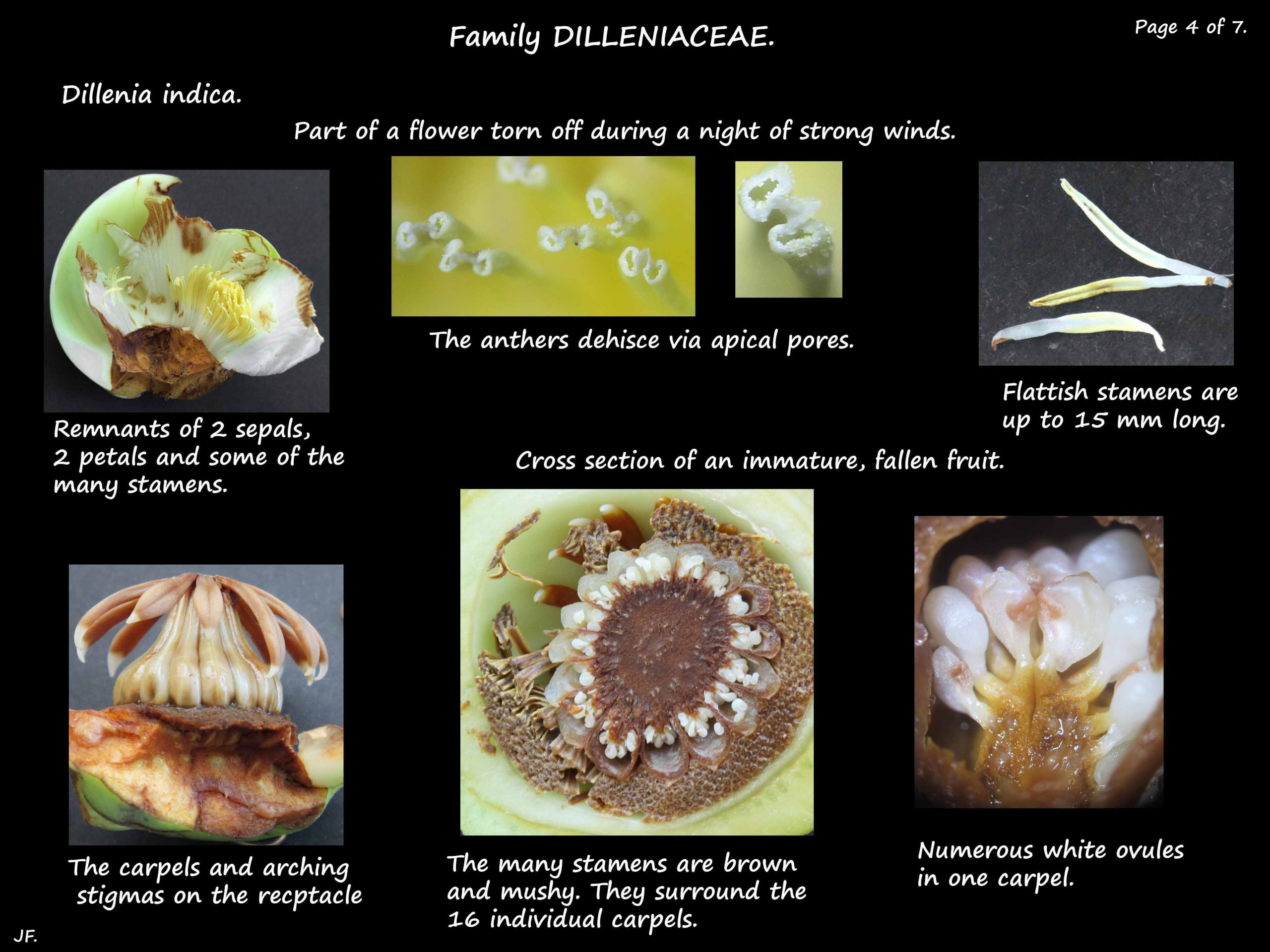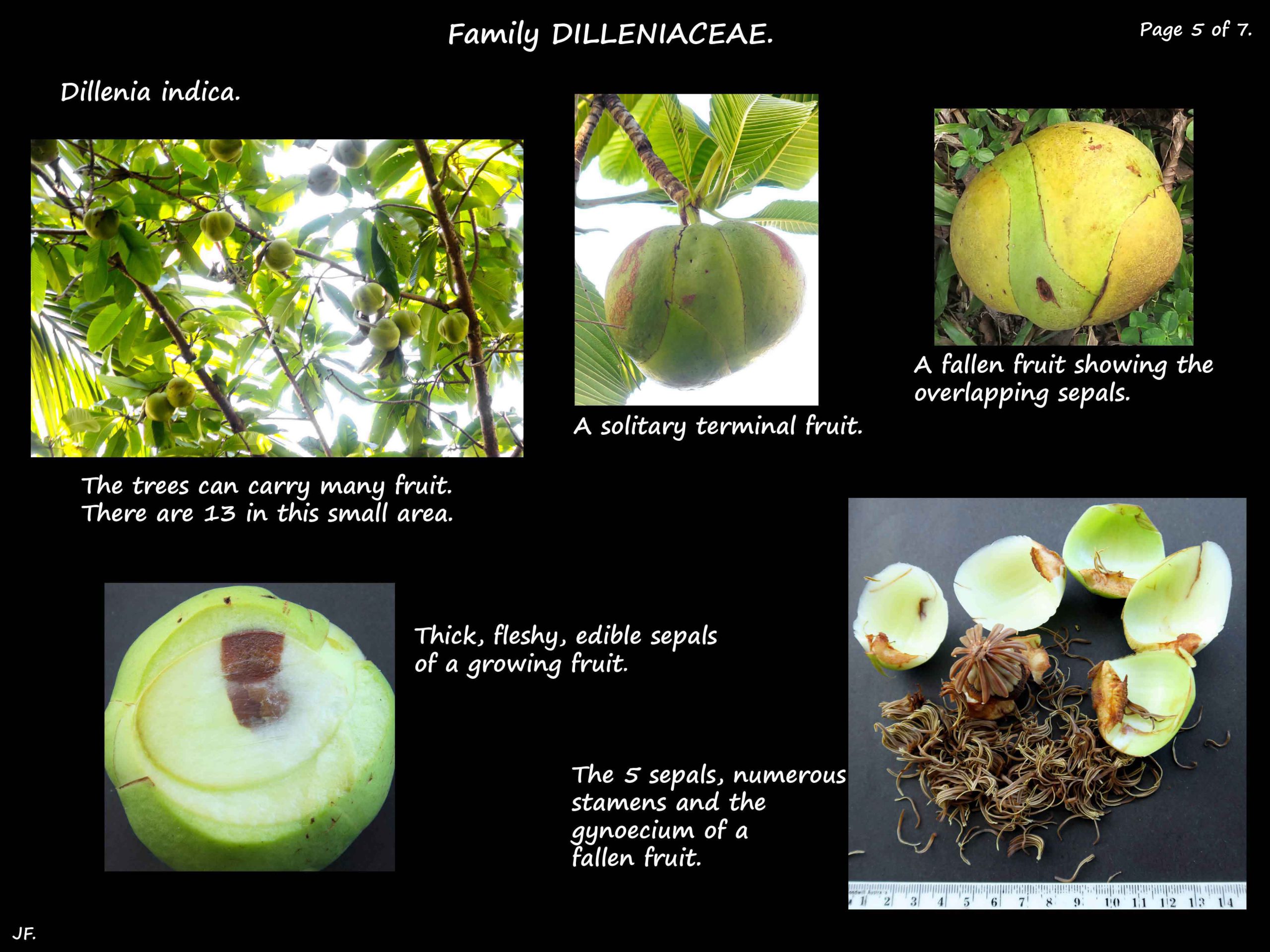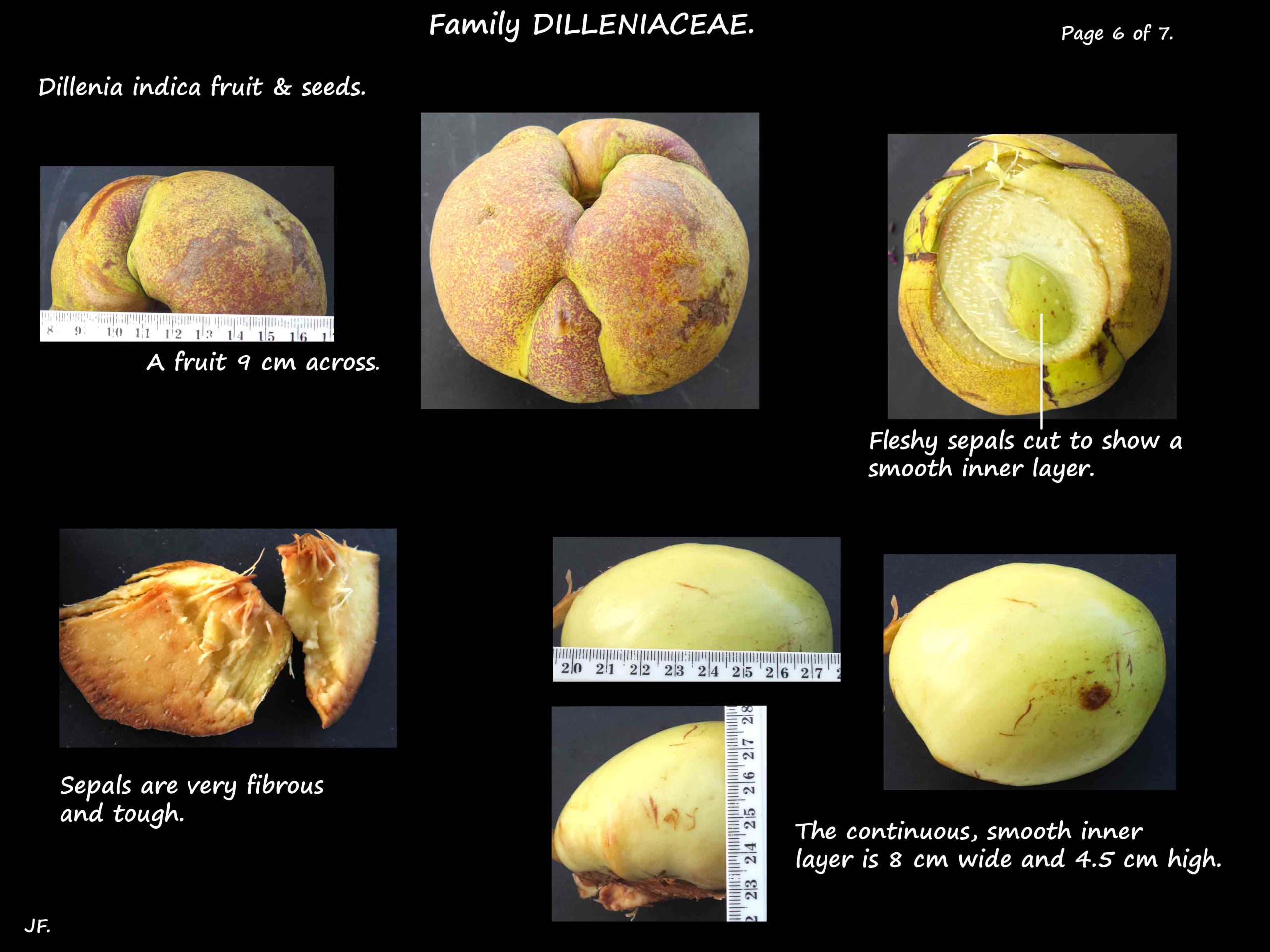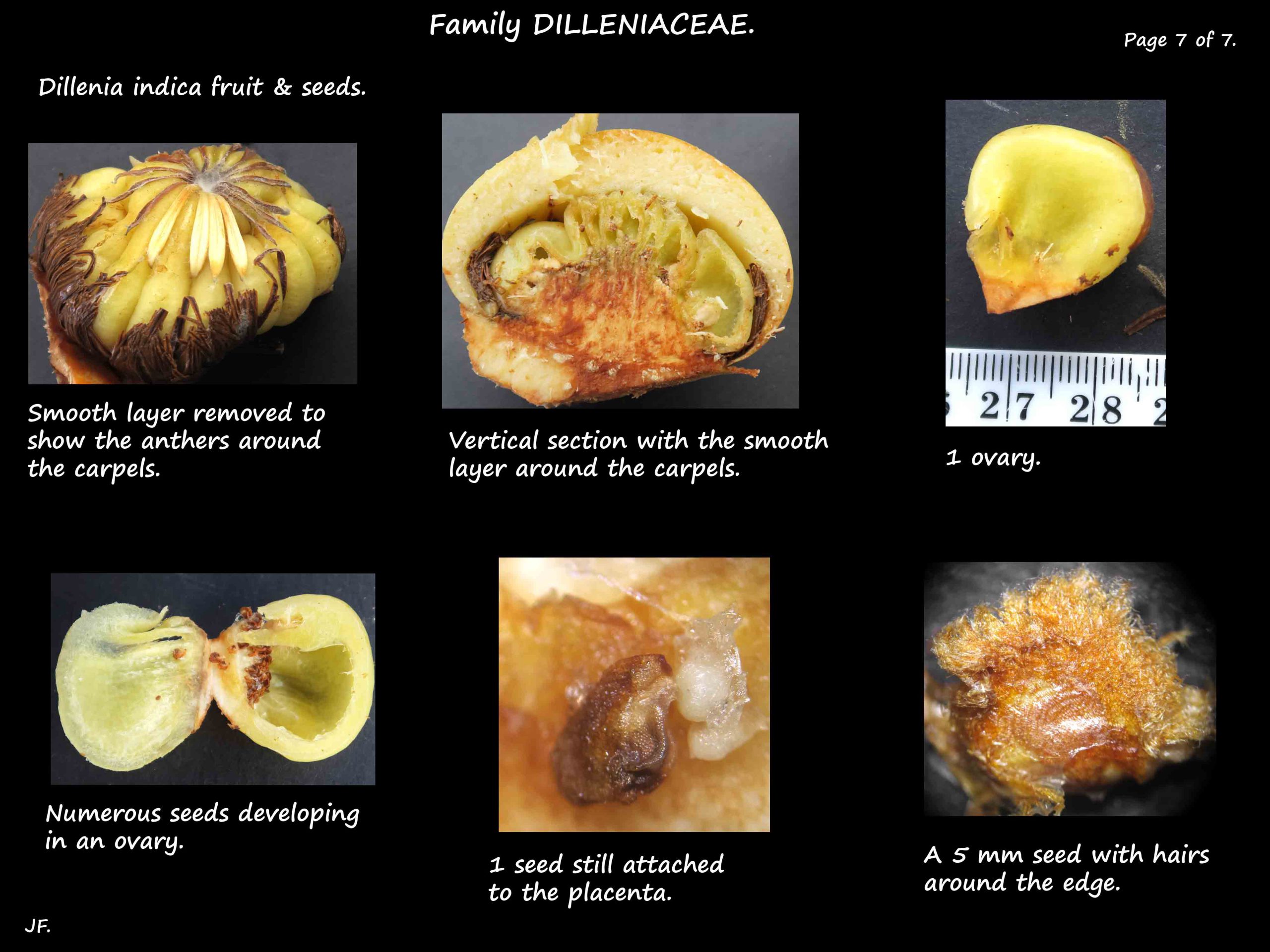Dillenia indica – Elephant Apple.
Family Dilleniaceae.
Australia has about 100 native species of mostly evergreen trees and shrubs.
Dillenia indica is commonly known as the Elephant apple.
The fruit tastes like an unripe apple and is a favourite food of elephants.
It is an evergreen tree up to 15 m high.
Leaves are concentrated at the ends of the smooth-barked branches.
Leaf stalks, 2 to 4 cm long, are grooved and winged, with a hairy base.
The simple, bright green leaves are spirally arranged near the branch ends.
Up to about 35 cm long, they are widely elliptic with a pointed tip.
The surface has a corrugated appearance with very prominent secondary veins.
The margin is toothed with the veins ending at a tooth.
There are hairs on the veins on the underside.
The solitary, bisexual, terminal flowers are up to 20 cm across.
They are on a stalk about 8 cm long.
There are lanceolate bracts about 6 mm long.
The 5 ovate, concave sepals are initially about 4 cm long and 2 cm wide.
They are pale green and persist in the fruit where they continue to grow.
The stamens and carpels are on a conical receptacle.
There are 5 obovate (ovate but widest above the middle) or oblong white petals.
The petals spread outwards and they tend to fall off early.
The many stamens have linear anthers that are up to 1 cm long with apical pores.
The inner stamens are about 20 mm long and the outer about 15 mm.
The gynoecium consists of 15 to 20 pale green carpels.
The styles are about 22 mm long and hidden by the stamens.
The flat, white stigmas curve down to form a star-like structure over the stamens.
The hard, yellow-green fruit are roughly spherical and up to 12 cm across.
The now fleshy sepals cover the carpels each of which has 5 or more developing seeds.
The flattened, pale brown to black, kidney-shaped seeds are about 5 mm long.
There are hairs on part of the margin.
J.F.
